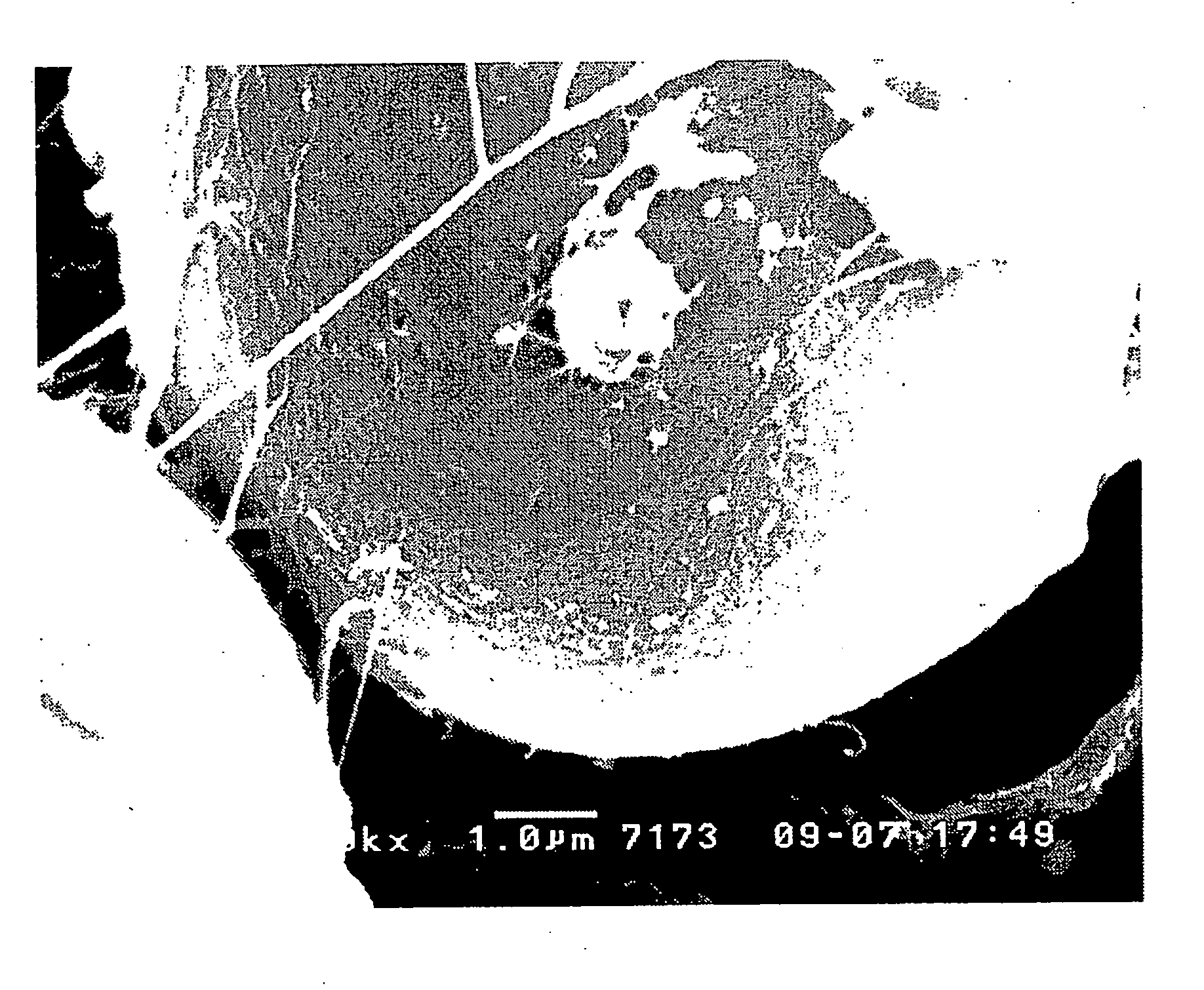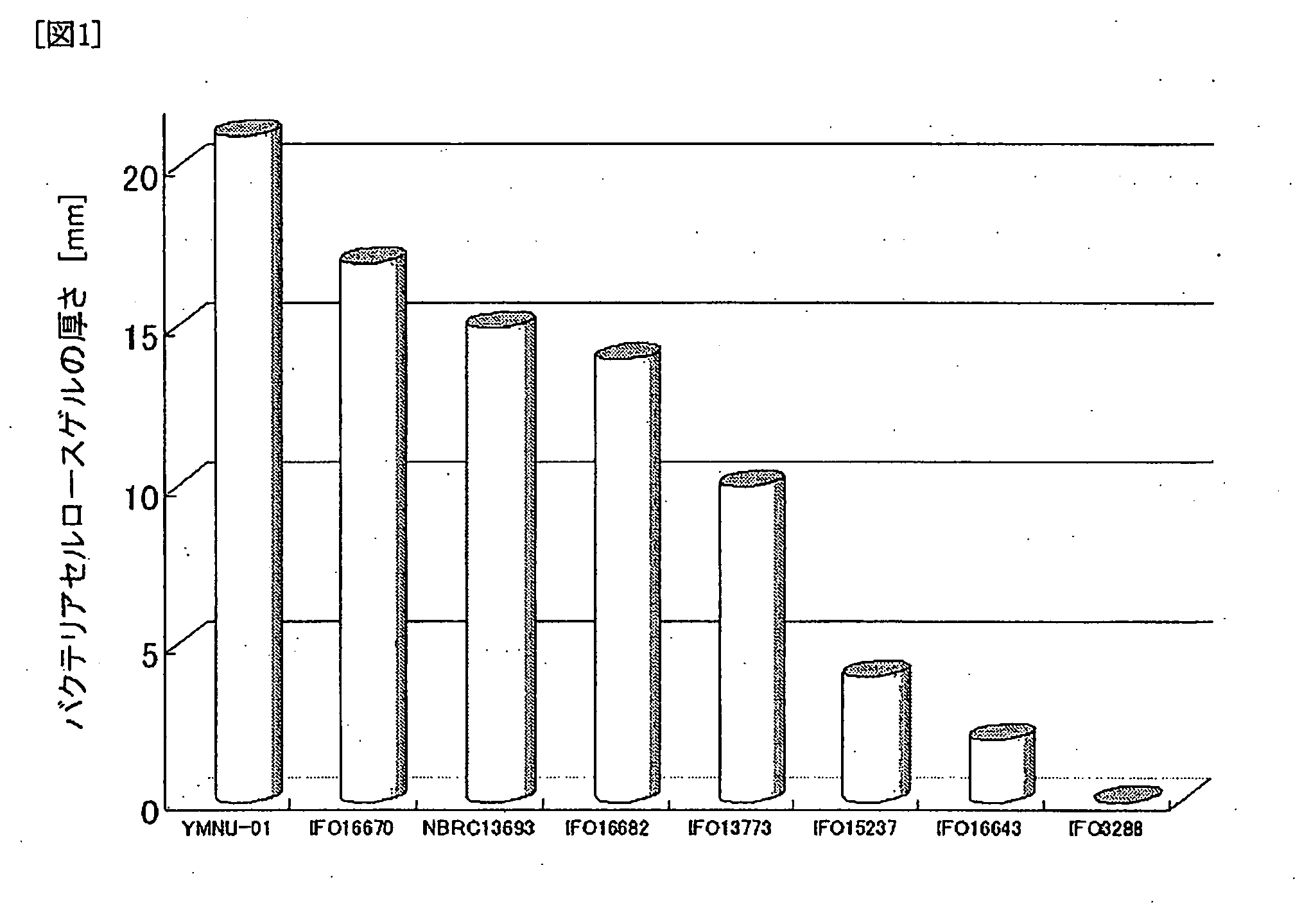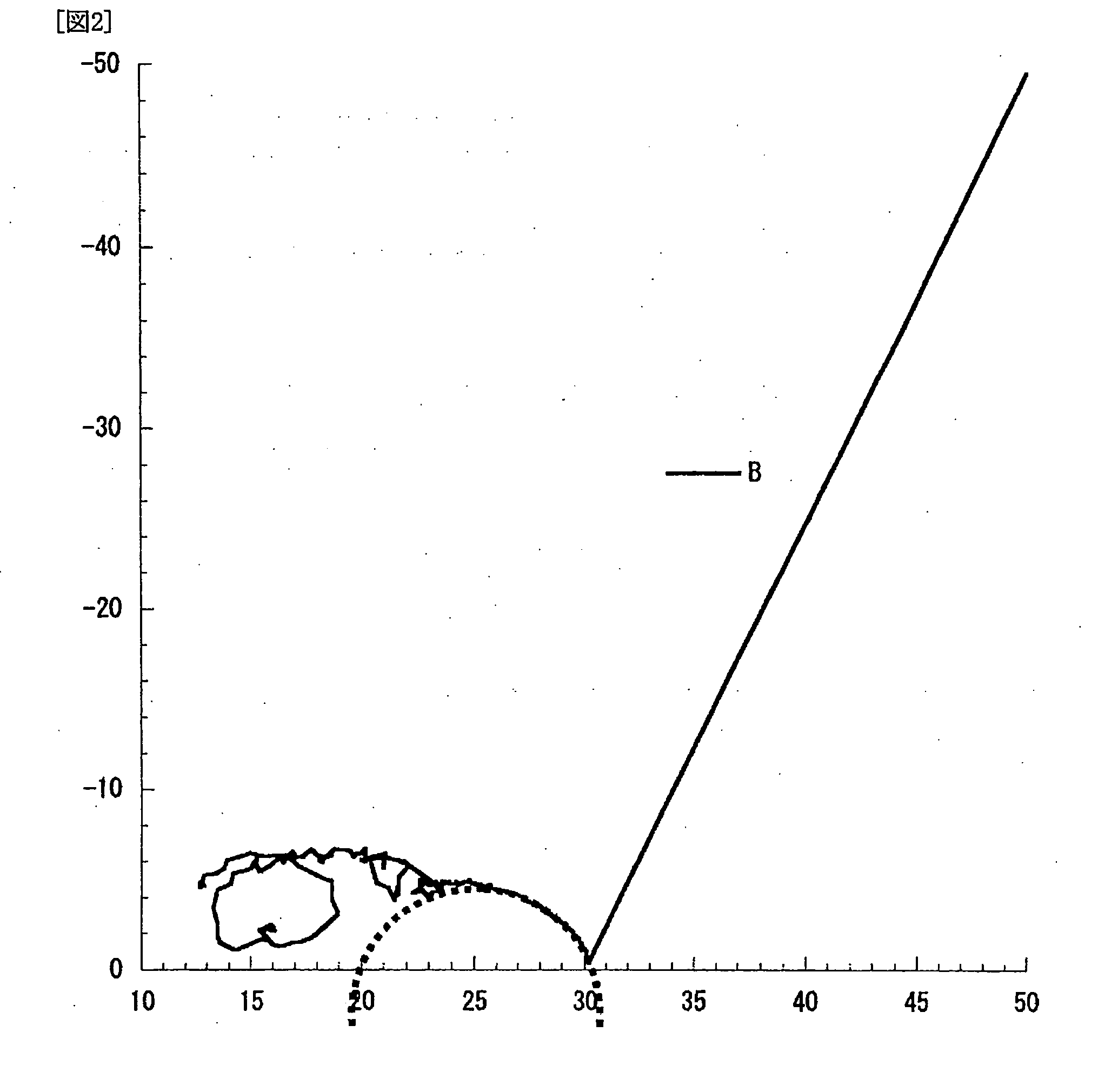Lithium Ion Conductive Material Utilizing Bacterial Cellulose Organogel, Lithium Ion Battery Utilizing the Same and Bacterial Cellulose Aerogel
a technology of bacterial cellulose and lithium ion conductive material, which is applied in the direction of conductors, non-aqueous electrolyte cells, cell components, etc., can solve the problems of deterioration of electrolyte salt, affecting battery characteristics, and requiring a lot of time, so as to achieve excellent mechanical strength, excellent lithium ion conductivity, and excellent performance
- Summary
- Abstract
- Description
- Claims
- Application Information
AI Technical Summary
Benefits of technology
Problems solved by technology
Method used
Image
Examples
example 1
Preparation of Bacterial Cellulose
1. Production of Agar Medium
[0094] In 100 ml of pure water were dissolved 0.5 g of glucose, 0.5 g of polypeptone, 0.1 g of magnesium sulfate, 0.5 g of yeast extract and 0.5 g of mannitol, to the solution, 2 g of agar was added and heated to dissolve. The resultant solution was divided into test tubes by 8 ml, sealed with an urethane culture-plug. The plug was further covered tightly with an aluminum foil. Heat sterilization was conducted in an autoclave at 120° C. for 9 minutes. The sterilized solution was allowed to stand at a slant overnight, the generated gel was used as a slant culture.
2. Bacteria Inoculation into Culture
[0095]Acetobacter xylinum (FERM P-20332) was inoculated into the foregoing slant culture and cultured at 30° C.
3. Preparation of Culture Liquid
[0096] In 500 ml of pure water were dissolved 15 g of glucose, 2.5 g of polypeptone, 0.5 g of magnesium sulfate, 2.5 g of yeast extract and 2.5 g of mannitol, heat sterilization ...
example 2
Mutant of Acetobacter xylinum
[0100]Acetobacter xylinum (IFO13772) was cultured in the same manner as in Example 1. The resultant Acetobacter xylinum was named YMNU-01 and deposited in the National Institute of Advanced Industrial Science and Technology (National Institute of Advanced Industrial Science and Technology, International Patent Organism Depositary, Depositary Number FERM P-20332, International Depositary Number FERM BP-10357). As shown in FIG. 1, it was known that the resultant Acetobacter xylinum generated a very thick gel.
example 3
Production of Bacterial Cellulose Gel Electrolyte
1. Preparation of Lithium Ion Electrolytic Solution
[0101] Lithium bistrifluoromethanesulfonylimide of 78:50 g was dissolved in polyethylene glycol dimethyl ether of 200 g to yield an electrolytic solution.
2. Preparation of Gel Electrolyte
[0102] In the above electrolytic solution prepared in a separable flask, the bacterial cellulose sample of 118 g was immersed, and was allowed to stand at 60° C. under a reduced pressure for 24 hours to mix dispersion media. Next, temperature was raised stepwise, allowed to stand finally at 130° C. under a reduced pressure for 24 hours to exchange dispersion media to yield a gel electrolyte.
PUM
 Login to View More
Login to View More Abstract
Description
Claims
Application Information
 Login to View More
Login to View More - R&D
- Intellectual Property
- Life Sciences
- Materials
- Tech Scout
- Unparalleled Data Quality
- Higher Quality Content
- 60% Fewer Hallucinations
Browse by: Latest US Patents, China's latest patents, Technical Efficacy Thesaurus, Application Domain, Technology Topic, Popular Technical Reports.
© 2025 PatSnap. All rights reserved.Legal|Privacy policy|Modern Slavery Act Transparency Statement|Sitemap|About US| Contact US: help@patsnap.com



